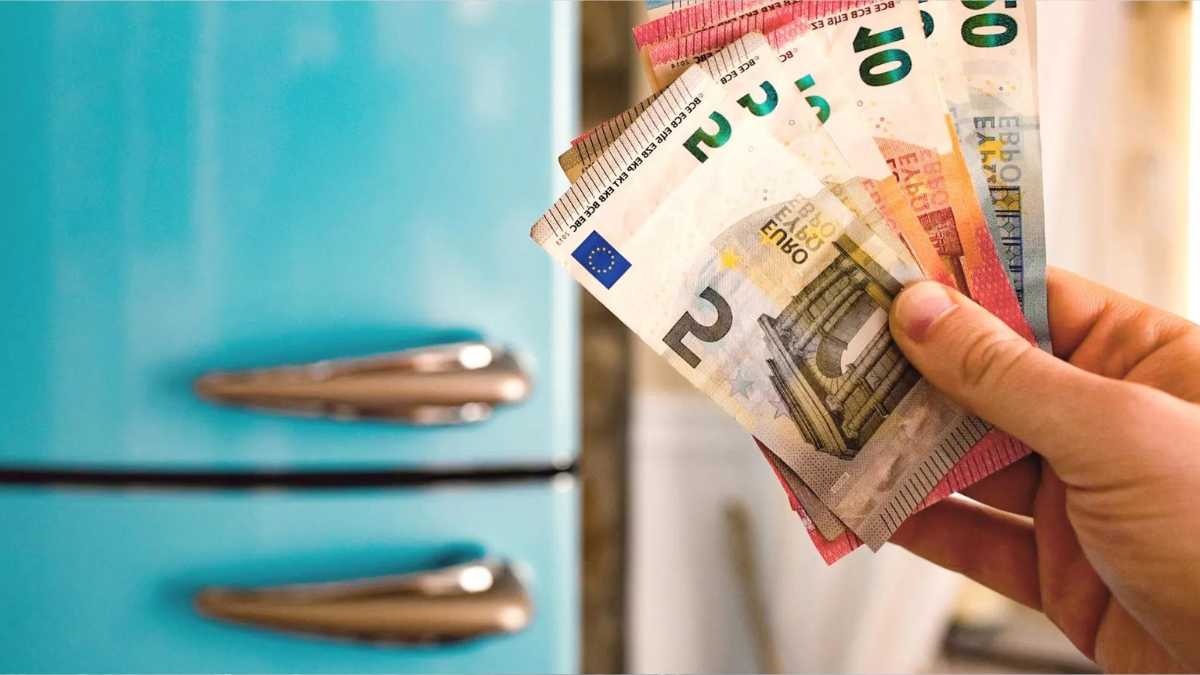You too have an electricity guzzler in the kitchen! Here’s how you can put an end to it with a banknote.
How a banknote in your refrigerator door tells you whether your refrigerator is a real power guzzler. Discover this clever trick with us and learn how you can save electricity and energy in your household. Read on to learn more.
Tip 1 to save energy: Maintain rubber of the refrigerator door
Your refrigerator consumes an unnecessary amount of energy when the door doesn’t close properly. Often, the problem lies with the rubber rim around the door, which loses elasticity over time. You can quickly change that. Take a bill and insert it into the door of your refrigerator. If you can pull the bill out without resistance, it’s a sign that the door isn’t closing properly.
- Wipe the rubber thoroughly. You can use a mild detergent and a soft cloth for this.
- Now it gets exciting! Take a hair dryer and heat the rubber all around. The heat will make the rubber more pliable and conform better to the contours of the refrigerator.
- Rub your finger over the rubber again to make sure it is soft and flexible. This will tell you if the seal is in place and protecting your refrigerator from unnecessary energy loss.
Tip 2: Set the temperature correctly
The temperature in your refrigerator plays a crucial role when it comes to energy consumption. Often, the temperature is set too low, which leads to increased energy consumption. To avoid this, you should set the temperature to the recommended values.
- Check your refrigerator’s owner’s manual for recommended temperature ranges. Usually, the optimal temperature is between 37 and 41 degrees Fahrenheit in the refrigerator and minus 0,4 in the freezer.
- Use a thermometer to check the actual temperature in your refrigerator. Place it in a glass of water in the middle of the refrigerator and leave it for a few hours.
- Adjust the temperature accordingly if it is not at the recommended levels. Be careful not to set it too low, as this can cause freezer burn in food.
Tip 3: Clean the refrigerator regularly
Cleaning your refrigerator regularly is not only hygienic, but it also contributes to energy efficiency. A clean environment allows air to circulate better and the fridge to work more efficiently.
- Clean out the refrigerator completely and remove all food
- Clean the interior walls, shelves and drawers with a mixture of warm water and mild detergent. Be careful not to use harsh chemicals as they can affect the smell and taste of the food.
- Check and clean the condenser at the back of the refrigerator. If dust and dirt accumulate there, it can greatly affect the performance of your refrigerator.
- After everything is cleaned, put the food back into the fridge and make sure it is arranged in an orderly manner so as not to block the air circulation.
As you can see, there are some ingenious tricks to make your refrigerator more energy efficient and thus save on household energy costs.
More tips to save electricity
Your refrigerator needs regular maintenance. Here’s what you should do more often:
- Check the temperature regularly Make sure the internal temperature of the refrigerator is between 37 and 41 degrees Fahrenheit, as explained above. A lower temperature is not only energy inefficient, but also leads to unnecessary energy consumption.
- Defrost the freezer regularly: when ice accumulates in the freezer, it insulates the refrigerator and makes cooling more difficult. Remove the ice regularly by defrosting the refrigerator to improve efficiency and save energy.



